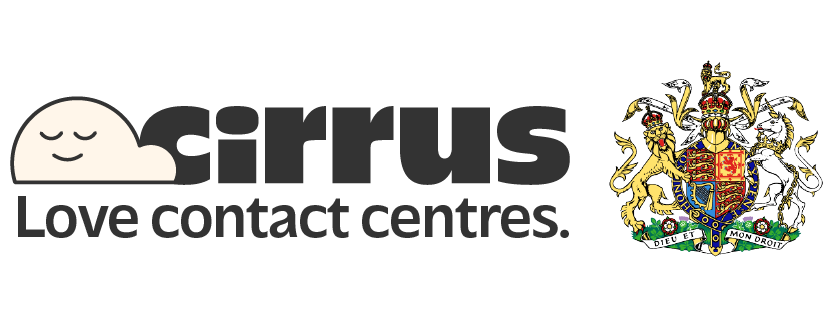What is the yield rate?
Yield rate is a measure of how many customer interactions result in successful outcomes compared to the total number of contact attempts. It is used in contact centres to assess operational efficiency, performance, and how well resources are being used to achieve specific goals. The outcomes could be anything from resolving a customer query to securing a lead or completing a transaction.
Yield rate helps contact centre leaders measure AI-enabled contact centre impact, guide staffing requirements, and adjust systems to better meet customer expectations.
Understanding yield rate
In practical terms, yield rate is the percentage of customer contacts that lead to a desired result. This could apply to phone calls, emails, or live chats. It helps contact centres understand what portion of their workload is actually productive. A high rate suggests systems and agents are aligned with customer needs. A low rate could mean that interactions are frequent but do not deliver value.
Yield rate is closely tied to customer experience metrics such as customer satisfaction score and resolution rate. Contact centre operations that optimise for outcome-based results typically report higher customer loyalty and more satisfied customers.
How is the yield rate calculated in contact centres
The formula for calculating yield rate is:
(Successful interactions / Total interactions) × 100
The key is to define what counts as a success. In inbound calls, it may be a first-call resolution. For outbound calls, it might be a confirmed booking or survey response. Knowing the types of calls handled and their purpose helps calculate an accurate yield.
Some organisations use workforce optimisation tools to pair this data with agent scheduling. This allows better control over time frames, agent allocation, and operational costs.
Yield rate and related performance metrics
Yield rate is often assessed alongside centre performance indicators such as agent productivity, occupancy rate, and abandonment rate. CRM tools may offer visibility into contact reasons and centre productivity metrics. Omni-channel strategies also affect volume distribution and agent performance.
When used with quantitative metrics like average handling time and percentage of time agents are active, yield rate offers clarity on real outcomes achieved per effort invested.
Factors that influence the yield rate
There are many elements that impact yield:
- Call flow design and skills-based routing ensure incoming calls are handled by the most suitable agents, improving resolution rate while minimising delays and poor call routing across departments.
- Agent access to AI-powered agent support provides helpful prompts during conversations, making it easier for centre agents to manage customer queries and maintain consistent agent performance.
- The quality of coaching systems and agent training builds stronger agent productivity over time, helping individual agents respond effectively and meet service-level goals across different customer interactions.
- Collaboration supported through Microsoft Teams integration allows smoother communication among team members, which reduces idle time and improves coordination during peak hours.
- Use of accessibility tools for diverse customer bases helps reduce unresolved issues and ensures customer service representatives support a wider range of customer expectations with confidence. Supports inclusivity, ensuring unresolved issues are minimised and the percentage of customers served improves over time.
These factors collectively influence key metrics like customer effort score and service levels.
Yield rate in inbound and outbound calls
In inbound calls, yield depends on how well customer issues are resolved within expected response times. In outbound scenarios, timing and message relevance drive conversion. Both rely on agent efficiency and proactive customer service standards.
Extended wait times or poor call routing often reduce the percentage of calls answered and create customer frustration. Industries such as secure payments may see different patterns due to verification processes.
Common reasons for low yield rate
Challenges that cause low yield include:
- Inadequate staffing during peak hours often leaves agents overwhelmed, which affects agent performance and leads to longer customer wait times and increased abandonment rates.
- Ineffective use of interactive voice response may frustrate callers, especially when basic customer inquiries go unresolved or are routed incorrectly, hurting first-call resolution and overall customer satisfaction.
- Disconnected administrative tasks slow down agent productivity, especially when switching between systems adds to response times and complicates handling of customer calls during busy periods.
- High idle time or long time between calls can result in wasted capacity, where the percentage of time agents spend productively drops, affecting key metrics like occupancy rate and service levels.
- Over-focusing on quantity over quality pushes centre agents to rush through customer interactions, risking unresolved issues, customer frustration, and ultimately impacting customer loyalty and centre performance. can lead to rushed conversations, resulting in customer frustration, unresolved issues, and a noticeable drop in centre ROI.
These problems lead to unresolved issues, negative customer feedback, and performance dips for centre agents.
Industries like housing, government and healthcare often face unique volume and staffing challenges.
Improving yield rate without increasing costs
To improve results without adding additional agents:
- Automate repetitive post-call work
- Simplify wrap-up time and reduce post-call tasks
- Introduce measurable agent improvements via coaching prep time
- Track performance over time with centre gamification software
- Prioritise improvement opportunities that address core customer pain points
These efforts also contribute to cost savings, reduced training costs, and better coaching outcomes.
Industry benchmarks and what is considered good
Industry standards suggest a yield rate of 70% for inbound and 25% for outbound is healthy. But benchmarks vary by region and workload type. Higher education and retail centres see shifts depending on seasonality, channel mix, and staffing levels.
Reviewing the Average Call Abandonment Rate and promoter score can also provide valuable insights into the overall centre ROI.
Staffing decisions and impact on yield
Yield data supports informed decisions about staffing requirements, employee engagement, and centre strategies. For business process outsourcers (BPOs), optimising billable hours while meeting service level goals is critical.
Balancing agent utilisation rate with coaching time ensures centre agent performance is not compromised.
Technology and yield rate improvements
Technology investments can unlock productivity at scale. When centre operations streamline tools across departments, agent utilisation and customer support team morale improve. Effective platforms reduce the percentage of calls blocked and resolve customer inquiries faster.
Tools used by not-for-profit centres show how structured systems can deliver good results without high employee salaries.
Yield rate across different communication channels
Channels vary in their success rates:
- The voice channel allows active listening and faster resolution time
- Email gives more room for detailed customer queries, but increases average talk time
- Social handles more promoter score opportunities, but may not address all customer issues
- Chat tools must keep pace with the arrival rate to maintain consistency
Selecting the right channel mix and understanding calls per day improves agent performance.
Conclusion
Yield rate is a critical metric in evaluating operational performance and contact centre performance. It brings together how effectively agents work, how efficiently resources are used, and how customers feel about their experience.
By identifying trends over time and aligning service-level goals with practical strategies, centres can reduce customer pain points, support agent development, and deliver more consistent results. To explore smarter ways to strengthen outcomes across your team, request a demo.
Your Contact Centre, Your Way
This is about you. Your customers, your team, and the service you want to deliver. If you’re ready to take your contact centre from good to extraordinary, get in touch today.


